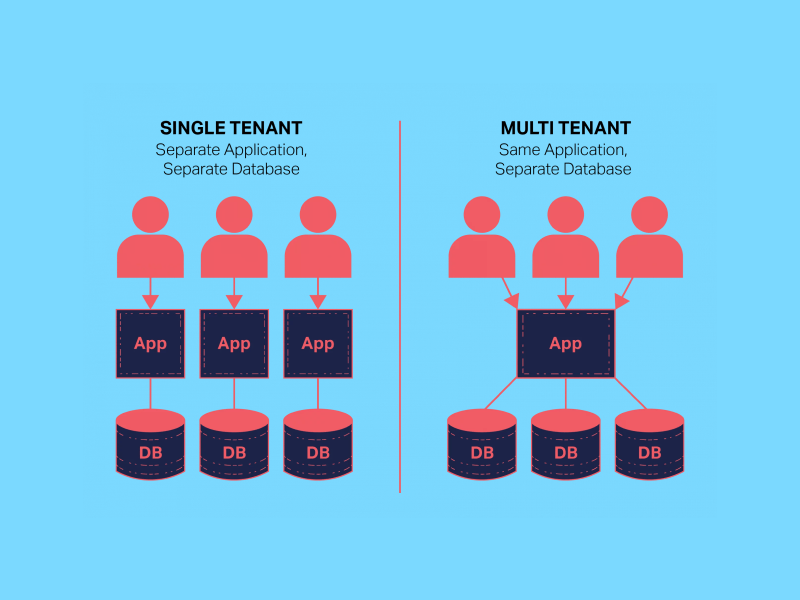
- May 21, 2021
- marketing ahex
- 0
Multi-tenancy vs Single tenancy pros and cons
Multi-tenant architecture
Multi-tenant architecture is nothing but serving more than one tenant. It shares the same database with all the clients including the application information. It provides a great solution for all businesses which want to experience a comfortable start-up with less hardware requirement. It has become the standard within the environment of enterprise SaaS. This kind of architecture also allows users to make changes within the software itself.Single Tenant architecture
It uses a software application for each client separately with a database. Clients are able to share the database or application between them, only because each one of them has its database and its applications. It has a very unique and specific design mainly because it allows one instance per SaaS server. It enables us to build every piece of software for every client. After the instalment of the software, clients can even change the UI of their own. But they won’t be having access to underlying code. It is adaptable to cloud computing.Benefits of Single-Tenant SaaS: –
-
Improved Security
-
Reliable Operations
-
Easy Restoration and Backup
-
Individual upgrades
-
Self-Hosted Migration
Benefits of Multi-Tenant SaaS Architecture
-
Lower Costs
-
Efficient Resources
-
Fewer Maintenance Costs
-
Shared Data Centres
-
Larger Computing Capacity
Cons of Single-Tenant SaaS
Below are some drawbacks associated with a single tenancy.-
Single-tenant SaaS typically costs a quite multi-tenant SaaS.
-
Single-tenant SaaS requires greater upkeep than multi-tenant SaaS.
-
Single-tenant SaaS is often extra inefficient than multi-tenant SaaS.
Cons of Multi-Tenant SaaS
- Multi-tenant SaaS can experience greater downtime than single-tenant SaaS.
- Multi-tenant SaaS has greater in-app disturbances than single-tenant SaaS.
- Multi-tenant SaaS cannot be customized like single-tenant SaaS.







